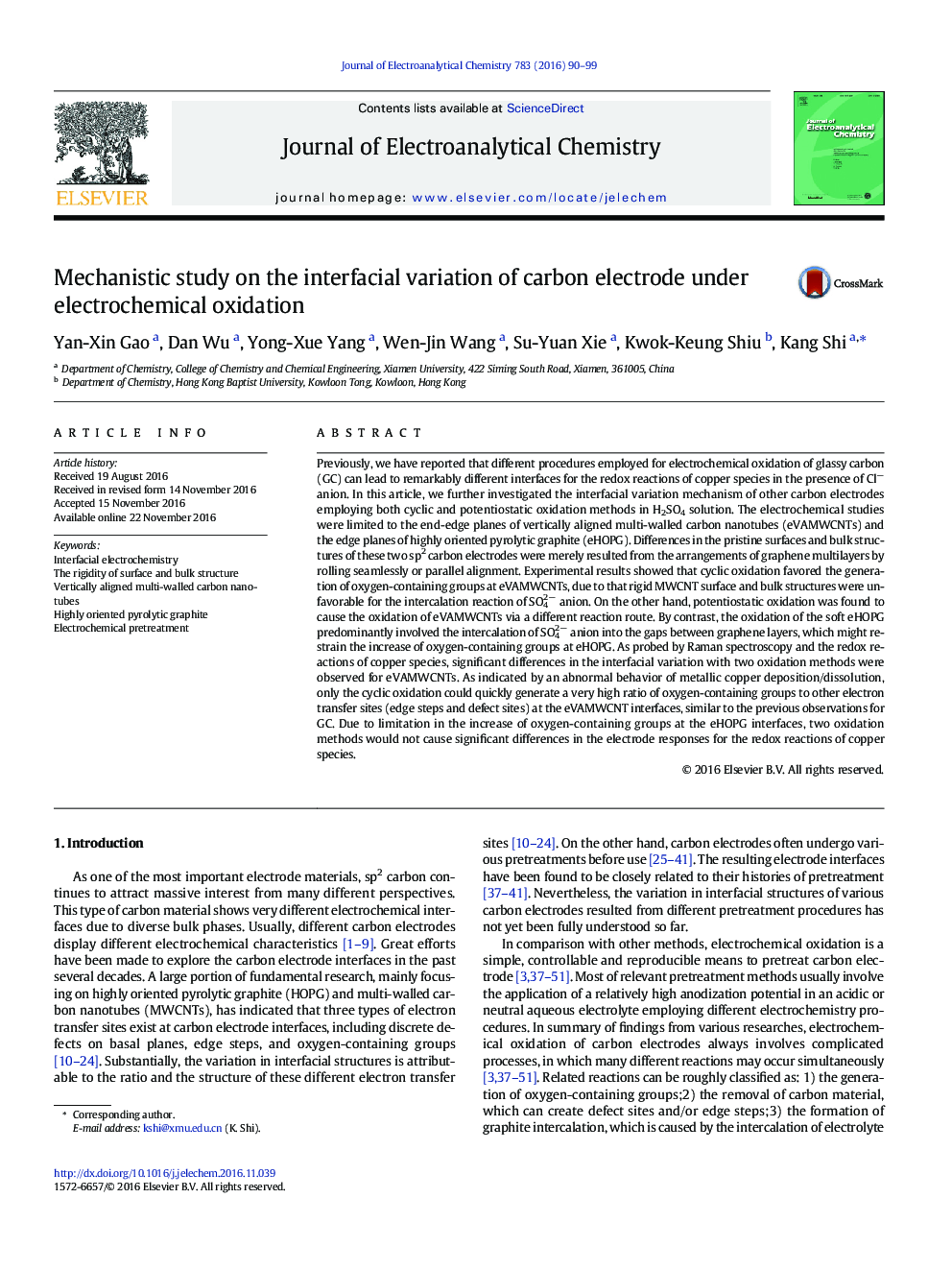| کد مقاله | کد نشریه | سال انتشار | مقاله انگلیسی | نسخه تمام متن |
|---|---|---|---|---|
| 6477063 | 1426592 | 2016 | 10 صفحه PDF | دانلود رایگان |
- Correlation of bulk structure with interface is established for carbon electrode.
- Rigid bulk structure of carbon electrode causes its interfacial variation with electrochemical oxidation methods.
- Redox reactions of copper species are sensitive to carbon electrode interface.
Previously, we have reported that different procedures employed for electrochemical oxidation of glassy carbon (GC) can lead to remarkably different interfaces for the redox reactions of copper species in the presence of Clâ anion. In this article, we further investigated the interfacial variation mechanism of other carbon electrodes employing both cyclic and potentiostatic oxidation methods in H2SO4 solution. The electrochemical studies were limited to the end-edge planes of vertically aligned multi-walled carbon nanotubes (eVAMWCNTs) and the edge planes of highly oriented pyrolytic graphite (eHOPG). Differences in the pristine surfaces and bulk structures of these two sp2 carbon electrodes were merely resulted from the arrangements of graphene multilayers by rolling seamlessly or parallel alignment. Experimental results showed that cyclic oxidation favored the generation of oxygen-containing groups at eVAMWCNTs, due to that rigid MWCNT surface and bulk structures were unfavorable for the intercalation reaction of SO42Â â anion. On the other hand, potentiostatic oxidation was found to cause the oxidation of eVAMWCNTs via a different reaction route. By contrast, the oxidation of the soft eHOPG predominantly involved the intercalation of SO42Â â anion into the gaps between graphene layers, which might restrain the increase of oxygen-containing groups at eHOPG. As probed by Raman spectroscopy and the redox reactions of copper species, significant differences in the interfacial variation with two oxidation methods were observed for eVAMWCNTs. As indicated by an abnormal behavior of metallic copper deposition/dissolution, only the cyclic oxidation could quickly generate a very high ratio of oxygen-containing groups to other electron transfer sites (edge steps and defect sites) at the eVAMWCNT interfaces, similar to the previous observations for GC. Due to limitation in the increase of oxygen-containing groups at the eHOPG interfaces, two oxidation methods would not cause significant differences in the electrode responses for the redox reactions of copper species.
197
Journal: Journal of Electroanalytical Chemistry - Volume 783, 15 December 2016, Pages 90-99
